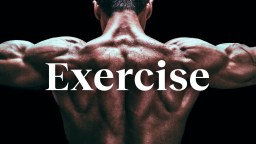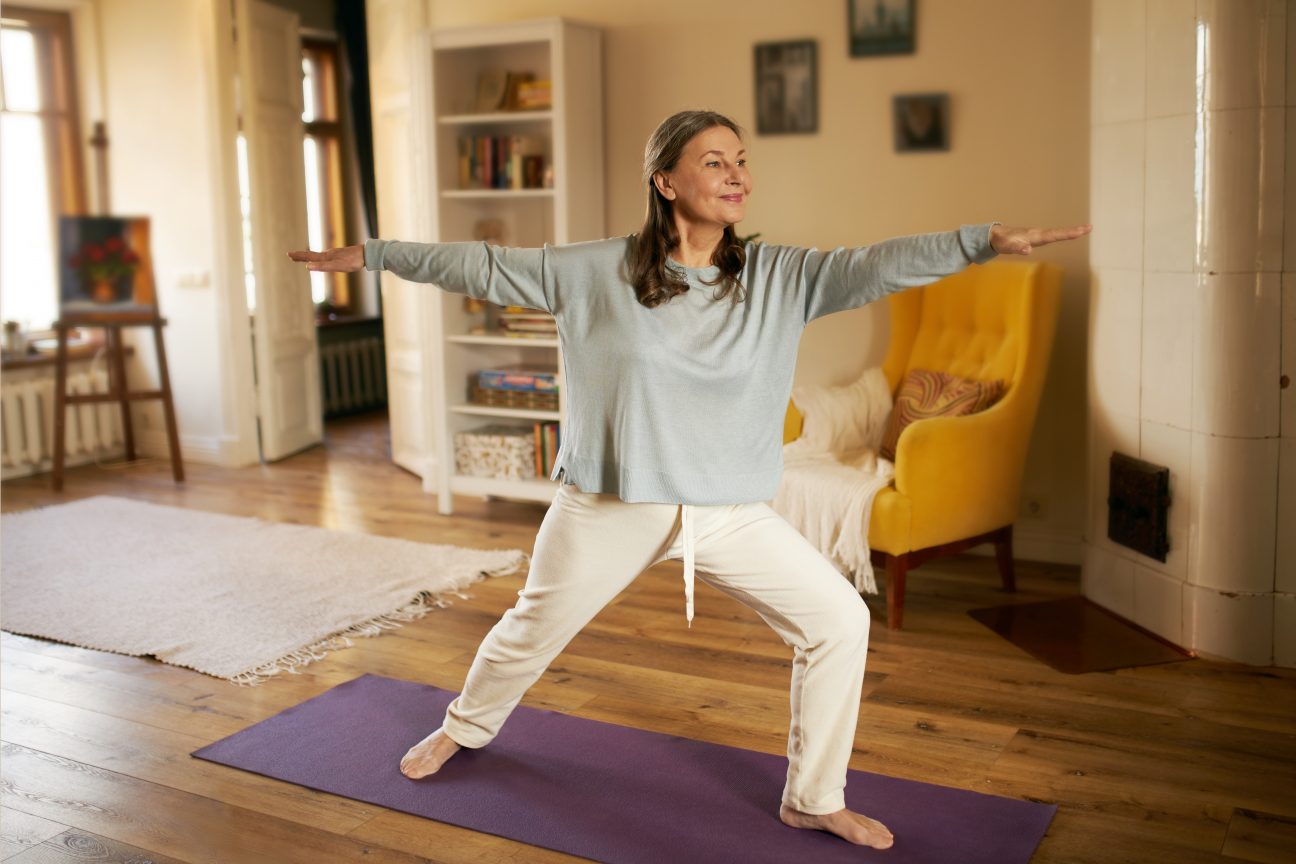No pain, no gain? Science debunks yet another exercise myth

- Exercise culture advertises intense workouts as the best way to see gains.
- But research suggests moderate exercise and physical activity is better, especially if you trade intensity for sustainability.
- You should strive to build habits around the physical activities you find enjoyable and fulfilling.
If you’re like me, you’re intimately familiar with what psychologists call “the intention-behavior gap.” It occurs when your current actions don’t align with your past intentions. While there are many areas in life where the intention-behavior gap can appear — work, family obligations, and retirement savings to name a few — the main culprit for most people (myself included) is probably diet and exercise.
“Only about 20% of Americans get the very minimum levels of exercise that every health organization in the world thinks is the minimum for an adult, which is 150 minutes a week. So 80% of us really struggle and fail to get very basic amounts of exercise, but almost everyone says that they want to get enough exercise,” Daniel Lieberman, a professor of the Department of Human Evolutionary Biology at Harvard University, said in an interview.
Why is that? How come, time and again, we promise ourselves that we’ll stick to our exercise routines, yet soon after, we’re back to our old ways? The answer may have something to do with the fact that exercise, well, kind of sucks.
Modern cultures view exercise as an intense and rigorous health ritual. It isn’t supposed to be pleasurable so much as penitence. It’s the torturous price we pay for all that sinful snacking. We even invoke the Inquisition-style mantras of “feel the burn,” “no pain, no gain,” and “make your muscles cry” to lead us to beachwear salvation.
But that mindset is an exercise myth. If we consider why medical professionals prescribe exercise in the first place — so that you can be happy and healthy today while thriving well into old age — there’s no reason it shouldn’t be an enjoyable, fulfilling, and welcomed part of our day.
That’s exactly what the research is discovering: People who enjoy their exercise routines are more likely to stick with them and close the intention-behavior gap than those who don’t. And you don’t have to transform into a gym rat to manage that.
The myth of “no pain, no gain”
In a recent cross-sectional study published in Frontiers in Psychology, researchers aimed to better understand what separated health club goers who petered out from those who stuck with it. They surveyed more than 200 participants across nine different health clubs, and their results showed that enjoyment positively predicted habit formation and exercise frequency.
The researchers also looked at the association between exercise intensity and participants’ personal intensity traits. Such traits include a person’s preference (their predisposition to a certain exercise level) and their tolerance (the intensity at which they can continue working out).
According to the authors, previous research indicated that increased workout intensity enriched pleasurable experiences. But only up to a point! After that tipping point, a person’s intensity traits become out of sync with the exercise’s intensity level, and their enjoyment of the experience nosedives — a kind of Yerkes-Dodson law for physical stress.
The study’s results showed the same. When participants felt their intensity traits matched the exercise’s intensity level, they enjoyed working out more and stuck with it longer. When things got too intense, participants dropped out.

A better hedonic treadmill
The study’s findings highlight the importance of enjoyment and moderation in exercise. Looking at the broader literature, we can find even more evidence emerging for this hedonic hypothesis.
A 2015 systematic review looked at 24 studies and found that a positive mood during moderately intense exercise was associated with future physical activity. Self-confidence in one’s ability to succeed also showed to be a reliable correlate. Meanwhile, intentions had a negligible relationship to frequency and habit formation.
Another systematic review found that positive feelings moderately boosted physical activity in exercisers and led to improvements and more successful interventions.
“From a hedonic theoretical standpoint, the most likely mediator of affective responses from exercise and future behavior is the affective judgment about future exercise, an umbrella term used to describe enjoyment, intrinsic regulation, and/or affective attitude,” the researchers of the 2015 review write.
It’s worth noting that the cross-sectional study and the studies in these reviews do suffer some predictive weaknesses. These include small sample sizes, self-reported data, and a lack of standardization in the exercises performed. Further research is needed.
Even so, the present data do lend their support to enjoyment over struggle. Pain isn’t an effective motivator, and neither are the best intentions or prospective rewards. To stick with exercise, we need to find ways to make it fun, fulfilling, and intrinsically rewarding.
Before modern medicine, what determined how long you lived was actually how long you were healthy — your ‘healthspan.’
– Daniel Lieberman
Find the fun factor in physical activity
This naturally leads to the question: How do we do that when exercise, again, kind of sucks?
The first step is to recognize the distinction between exercise and physical activity. As Lieberman pointed out: “Physical activity is just moving. You do anything — shopping, picking up your groceries and taking them to your car — that’s physical activity. But exercise is discretionary, voluntary physical activity for the sake of health and fitness.”
While we tend to promote exercise as the gospel of health, all physical activity offers some wellness benefits. You can use that recognition to discover ways to engage physically outside of the conditioning exercises typically associated with fitness — think push-ups, weightlifting, and whatever the heck Zuu is.
One way to get more physically active is simply to walk. “If there’s one physical activity that humans evolved to do, it’s to walk,” Lieberman said. You don’t even have to walk for walking’s sake. You can integrate a stroll into many activities you find enjoyable and rewarding.
For example, nature walks aren’t only physically enriching but can provide therapeutic benefits. According to researchers from the Exeter Medical School, two hours of nature per week grants extra wellness benefits on top of the physical activity of walking. You can also pair walking with activities such as birding or a social visit with a friend over coffee.
Other physical activities that fly outside the standard exercise regimen but are still beneficial to people’s health include gardening, cleaning, dancing, swimming, and playing with your kids.

Align your exercise with your intensity traits
That doesn’t mean people don’t need to engage in more traditional exercises. We should, but we don’t have to buy into the exercise myth that only blisteringly ferocious workouts convey results. While the research looking into high-intensity exercise programs is currently mixed, many studies suggest that these programs oversell and under-deliver.
One review found that both high-intensity training and moderate-intensity continuous training showed similar effectiveness in obese and overweight participants (though high-intensity training required less time commitment). Another review looking at extreme programs such as CrossFit and Insanity found they offered no improvements to body composition and physical fitness within the typical program windows (between 6 and 14 weeks, depending on the study).
All of which is to say: If your intensity traits are high, if you enjoy a challenge and pushing yourself physically, then go for it. Train for that marathon, hit that deadlift PR, and leave it all on the floor (safely and with good form, of course).
But if your intensity traits aren’t there yet, if you find such workouts wear you down physically and emotionally, feel free to try something else. Shoot for a 5K, enjoy some moderate strength training or a breezy bike ride on the boardwalk, and save some sweat for later.
You aren’t missing as much as you think, especially if you trade short-term intensity for life-long sustainability.
Another way to find your exercises more fulfilling is to use them to make gains socially. When we are younger, we naturally build relationships into physical activities. We play for long hours with friends on the playground. We form camaraderie through organized sports. But as we grow older, our social endeavors become more static and exercising a personal cross to bear.
Instead, search for opportunities to connect your social life to your physical health. Do a little research, and you’ll be surprised at the number of activity-based groups and clubs in your area. They can center on most any exercise or activity you find interesting — walking, biking, birding, boating, pick-up basketball games, the list goes on — at intensity levels from beginner to experienced.
Finally, if your routine no longer works for you, if you no longer find the joy in what you’re doing, switch it up. That may seem counterproductive, but remember the goal here isn’t to stick to a specific exercise routine; it’s to make exercise a routine part of your life.
“Before modern medicine, what determined how long you lived was actually how long you were healthy — your ‘healthspan,’” Lieberman said. “What physical activity does is it increases your healthspan, and your healthspan, therefore, increases your lifespan.”
As with all things, it’s about finding balance, pleasure, and self-betterment. When we manage that, we’ll find the gap between our intention and our actions shrinks all on its own.
Learn more on Big Think+
With a diverse library of lessons from the world’s biggest thinkers, Big Think+ helps businesses get smarter, faster. To access Big Think+ for your organization, request a demo.





